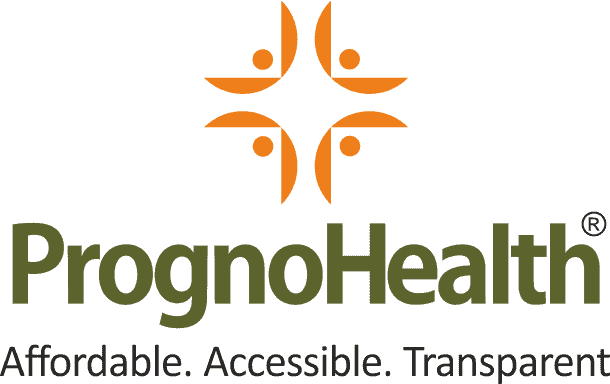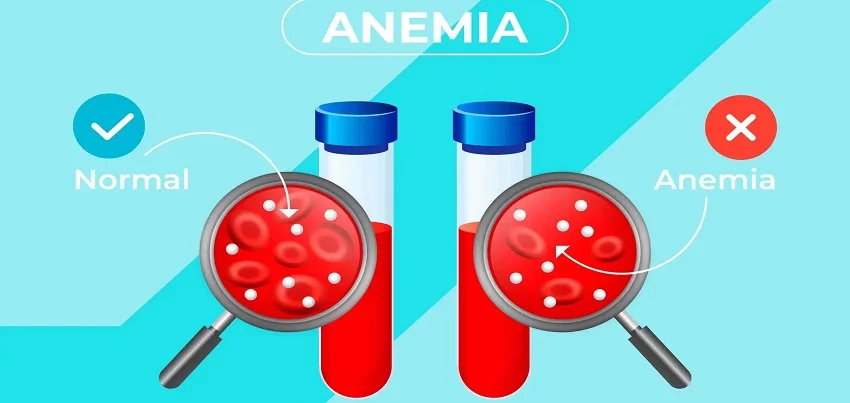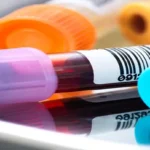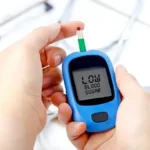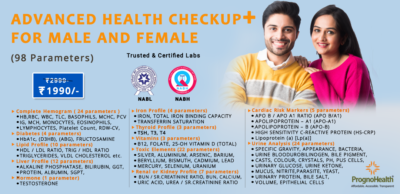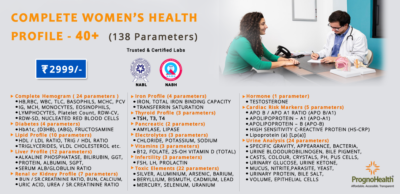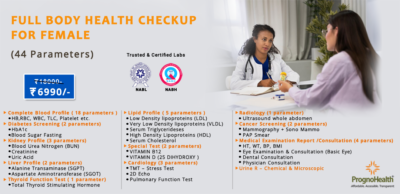PrognoHealth – Corporate Health & Wellness Specialist
Contact Us
+91 9510650660
Email Us
corpsales@prognohealth.com
Contact Us
+91 9510650660
Email Us
corpsales@prognohealth.com
Sickling Test
Sickling test is a laboratory test used to diagnose sickle cell anemia, a genetic blood disorder characterized by abnormal hemoglobin molecules that can cause red blood cells to become crescent-shaped or “sickle-shaped.”
Pre-test preparation: No specific preparation is required for this test.
Testing method: The sickling test is typically performed on a sample of blood that is obtained by a finger prick or venipuncture. The blood sample is then placed in a test tube containing sodium metabisulfite, a chemical that causes the red blood cells to sickle. The test is considered positive if at least 50% of the red blood cells show evidence of sickling.
Common symptoms for prescribing this test: The most common symptoms of sickle cell anemia include anemia, fatigue, jaundice, and recurrent infections. Pain crises, also known as sickle cell crises, are also a common symptom and may occur in the bones, chest, or abdomen.
Diagnosis: A positive sickling test confirms the diagnosis of sickle cell anemia.
Reference range: The test should show at least 50% of red blood cells sickling.
Normal values: A negative sickling test indicates normal hemoglobin and the absence of sickle cell anemia.
It is important to consult with a doctor or healthcare professional for any questions or concerns regarding the this test or any other medical test
“The sickling test, also known as the sickle cell test or sickle cell screening, is a diagnostic procedure used to detect the presence of abnormal hemoglobin associated with sickle cell disease (SCD). Here’s an in-depth look at various aspects related to the
sickling test:
Sickling Test Overview:
The sickling test is designed to identify the presence of sickle hemoglobin (HbS) in red blood cells. In sickle cell disease, a genetic mutation leads to the production of abnormal hemoglobin, causing red blood cells to become rigid and assume a sickle shape under certain conditions.
Procedure of the Sickling Test:
Blood Sample Collection: A small sample of blood is collected from the patient, usually through a finger prick or venipuncture.
Preparation of Sodium Metabisulfite Solution: Sodium metabisulfite is added to the blood sample to create a reducing environment, triggering the sickling of red blood cells containing HbS.
Observation: The blood sample is observed under a microscope for the presence of sickle-shaped red blood cells.
Interpretation of Results:
Positive Result: Sickle-shaped red blood cells are observed, indicating the presence of HbS and suggestive of sickle cell disease or sickle cell trait.
Negative Result: No sickle-shaped cells are observed, suggesting the absence of HbS. However, it’s important to note that some individuals with sickle cell trait may not exhibit sickling under standard testing conditions.
Normal Range:
There isn’t a “”normal”” range for the sickling test. The presence or absence of sickle-shaped cells determines the interpretation of the test results.
Importance in Diagnosis:
The sickling test is a crucial tool in the diagnosis of sickle cell disease. It helps identify affected individuals, enabling early intervention and management to prevent complications associated with the condition.
Accuracy and Limitations:
While the sickling test is relatively simple and cost-effective, it may yield false-positive or false-negative results in certain situations. Factors such as sample handling, technical expertise, and the presence of other hemoglobinopathies can influence test outcomes.
Alternatives and Complementary Tests:
Hemoglobin electrophoresis and molecular genetic testing (e.g., DNA analysis) are more definitive methods for diagnosing sickle cell disease and identifying carriers. These tests provide detailed information about the type and quantity of abnormal hemoglobin present.
Counseling and Follow-Up:
Patients with positive sickling test results should receive genetic counseling and appropriate medical management. Follow-up testing and monitoring are essential for individuals diagnosed with sickle cell disease or identified as carriers.
Cost and Accessibility:
The sickling test is generally affordable and widely available, making it accessible in various healthcare settings, including resource-limited environments. However, confirmatory testing may incur additional costs.
Global Health Initiatives:
The sickling test plays a crucial role in global health initiatives aimed at improving the diagnosis and management of sickle cell disease, particularly in regions with high prevalence.
Training and Quality Control:
Technicians performing the sickling test require adequate training to ensure accurate and reliable results. Quality control measures, including proficiency testing and adherence to standardized protocols, are essential for maintaining the integrity of testing procedures.
In conclusion, while the sickling test remains a valuable tool in the diagnosis of sickle cell disease, it should be interpreted in conjunction with clinical findings and confirmed by more definitive tests when necessary. Additionally, efforts to improve testing accuracy, accessibility, and follow-up care are essential for optimizing patient outcomes and addressing the global burden of sickle cell disease.”
Related Blogs
Blog Categories
Top rated products
-
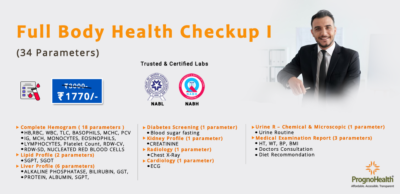 Full Body Health Checkup I
Rated 5.00 out of 5
Full Body Health Checkup I
Rated 5.00 out of 5₹3,000.00Original price was: ₹3,000.00.₹1,770.00Current price is: ₹1,770.00. -
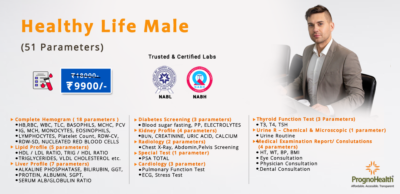 Healthy Life Male
Healthy Life Male
₹18,000.00Original price was: ₹18,000.00.₹9,900.00Current price is: ₹9,900.00. -
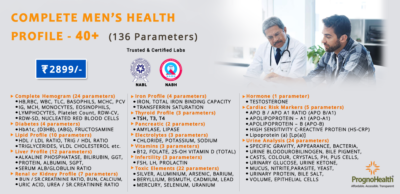 Complete Men’s Health Profile – 40+ – 136 Parameters
₹2,899.00
Complete Men’s Health Profile – 40+ – 136 Parameters
₹2,899.00
-
 OFFICE STAFF PACK II
OFFICE STAFF PACK II
₹2,400.00Original price was: ₹2,400.00.₹1,320.00Current price is: ₹1,320.00. -
 Full Body Health Checkup III
₹11,000.00
Full Body Health Checkup III
₹11,000.00
About Us
Progno Health is a Corporate Health & Wellness Specialist providing services to Pan India. We offer Pre-employment Health Checkup Packages, Annual Health Checkup Packages, Executive Health Checkup Packages, Occupational Health Checkup Packages, and other Health & Wellness Services.
